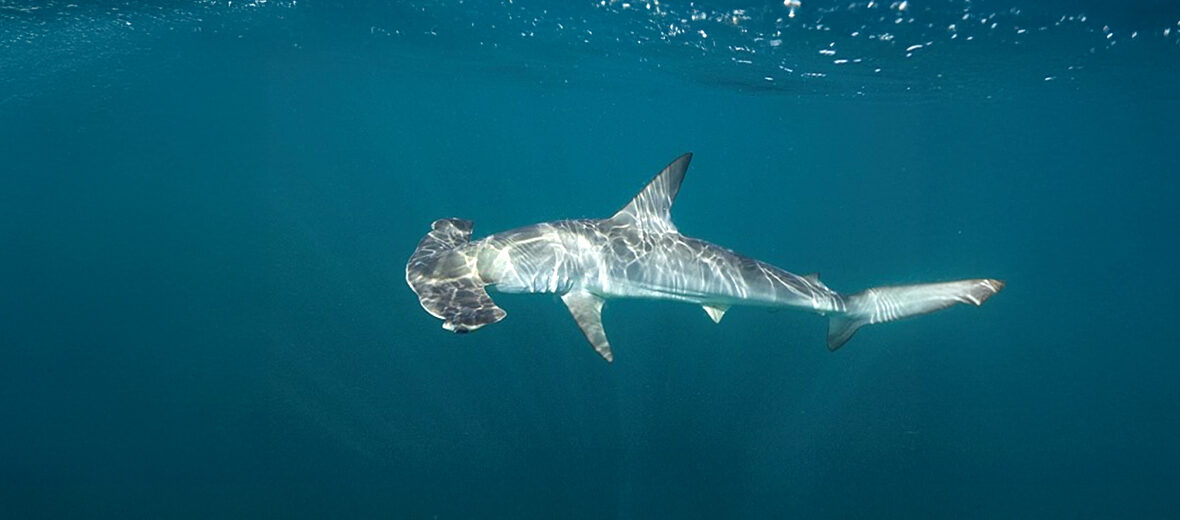
The smooth hammerhead shark can be found in the coastal waters of all continents sans Antarctica. These sharks are the 2nd largest hammerhead, after the great hammerhead shark. Smooth hammerhead sharks are migratory and tend to follow temperate water currents. They face the threats of overfishing and over harvesting. The IUCN lists these sharks as Vulnerable and their populations are decreasing, worldwide.
First the Stats…
Scientific name: Sphyrna zygaena
Weight: Up to 880 lbs.
Length: Up to 16 feet
Lifespan: Up to 20+ years
Now on to the Facts!
1.) They get their name from the smooth cephalofoil (hammer) shape of their head. Unlike other hammerheads, they lack indentations or depressions.
2.) During migrations, these sharks can form schools of up to several thousand individuals.
3.) Juveniles prey on fish, octopuses, and squids. Adults also prey on other smaller sharks and rays.
4.) In 1758 Swedish naturalist and historian Carl Linnaeus, known as the “father of taxonomy”, originally described these sharks as Squalus zygaena in the 10th edition of Systema Naturae, without designating a type specimen. The name was later changed to Sphyrna zygaena.
5.) Other common names for these sharks include: common smooth hammerhead, common hammerhead, round-headed hammerhead, or just hammerhead.
But wait, there’s more on the smooth hammerhead shark!
6.) While typically staying at around 60 feet deep, they can dive to depths of up to 660 feet.
7.) Smooth hammerheads, like all hammerheads, are viviparous (give live birth).
Did you know…?
Seeing as stingrays comprise the majority of an adult’s diet, 1 adult specimen was recorded as having 95 stingray spines lodged into its face!
8.) Females bear up to 50 pups after up to an 11 month gestation (pregnancy).
9.) Pups can measure up to 2 feet long at birth.
10.) These sharks are considered potentially dangerous to humans. As of 2008 an reported 34 attacks on humans were reported, with 17 being unprovoked. In comparison though upwards of 2.7 million hammerhead sharks are killed by humans each year!
But wait, there’s still more on the smooth hammerhead shark!
11.) Smooth hammerheads have also been reported stealing catches from sport fishermen and divers.
12.) Their meat is sold fresh, dried and salted, or smoked, however in most markets it is considered undesirable and there have even been reports of mercury poisoning.
Now a Short Smooth Hammerhead Shark Video!
This video talks about hammerhead sharks in general.
Be sure to share & comment below! Also, check out the Critter Science YouTube channel. Videos added regularly!

Want to suggest a critter for me to write about? Let me know here.
Some source material acquired from: Wikipedia & IUCN
Photo credit: elasmodiver



